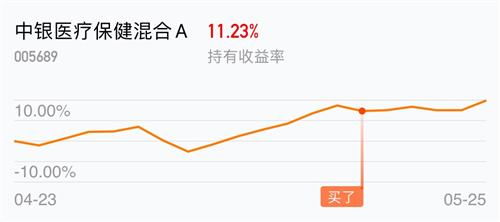基金跌多少会清盘
Title: Understanding Market Volatility in Investment Funds
Introduction
Investment funds, including mutual funds and exchangetraded funds (ETFs), are subject to market volatility due to various factors such as economic conditions, investor sentiment, and geopolitical events. Understanding the extent of potential declines in these funds requires insight into the nature of volatility and risk management strategies.
Factors Influencing Fund Volatility
1.
Market Conditions:
Investment funds are directly influenced by broader market trends. Economic indicators, interest rates, and geopolitical tensions can all impact market sentiment, leading to fluctuations in fund prices.
2.
Asset Allocation:
The composition of assets within a fund significantly affects its volatility. Equity funds, which primarily invest in stocks, tend to experience higher volatility compared to bond funds, which focus on fixedincome securities.3.
Geographical Exposure:
Funds with investments in emerging markets or specific regions may face heightened volatility due to factors such as currency fluctuations, regulatory changes, or political instability.4.
Sector Concentration:
Funds concentrated in specific sectors, such as technology or healthcare, may experience greater volatility if those sectors undergo rapid changes or face regulatory challenges.5.
Leverage and Derivatives:
Funds that utilize leverage or derivatives to amplify returns can also amplify losses during market downturns, leading to increased volatility.Historical Perspective
Historical data can provide insights into the potential magnitude of fund declines during volatile periods. Looking at past market downturns, such as the 2008 financial crisis or the dotcom bubble burst in the early 2000s, can help investors gauge the resilience of different types of funds during adverse market conditions.
During these crises, equity funds experienced significant declines, with some dropping by 30% to 50% or more. Bond funds, while generally less volatile than equity funds, also saw declines, albeit to a lesser extent.
Risk Management Strategies
1.
Diversification:
Spreading investments across different asset classes, sectors, and regions can help mitigate the impact of volatility on investment funds. Diversification reduces the correlation among assets, potentially lowering overall portfolio risk.2.
Asset Allocation:
Regularly rebalancing the allocation of assets within a fund can help maintain risk levels within predefined parameters. Adjusting the mix of stocks, bonds, and other assets based on market conditions and investment objectives is crucial for managing volatility.3.
Active Management:
Some funds employ active management strategies, where fund managers make investment decisions based on market analysis and research. Active managers may have the flexibility to adjust the fund's holdings in response to changing market conditions, potentially reducing volatility.4.
Risk Assessment:
Conducting thorough risk assessments, including stress testing and scenario analysis, can help identify potential vulnerabilities in a fund's portfolio. Understanding the risk factors specific to each investment can inform decisionmaking and risk mitigation strategies.5.
Investment Horizon:
Investors with longer investment horizons may be better positioned to weather shortterm market fluctuations. Maintaining a disciplined approach and avoiding reactionary decisions during periods of volatility can help investors stay focused on their longterm financial goals.Conclusion
Investment funds can experience significant declines during periods of market volatility, influenced by various factors such as market conditions, asset allocation, and geographical exposure. While historical data provides context for potential declines, risk management strategies such as diversification, asset allocation, and active management play a crucial role in mitigating volatility and preserving capital over the long term. By understanding the drivers of volatility and employing effective risk management techniques, investors can navigate turbulent market environments with greater confidence.
References
Investopedia. (n.d.). Understanding the Different Types of Investment Risk. [Link](https://www.investopedia.com/articles/investing/062614/understandingdifferenttypesinvestmentrisk.asp)
Vanguard. (2022). Managing risk in your portfolio. [Link](https://investor.vanguard.com/investing/onlinetrading/investmentrisk)
Morningstar. (2022). FundInvestor. [Link](https://www.morningstar.com/)
CNBC. (2022). Market Insider. [Link](https://www.cnbc.com/marketinsider/)
Bloomberg. (2022). Markets. [Link](https://www.bloomberg.com/markets)
股市动态
MORE>- 搜索
- 最近发表
-
- 平安最好的意外险,为您的明天保驾护航
- 股票000002,探索万科A的奥秘,投资路上的明灯
- 守护未来,深入了解中国平安养老保险
- 深入解析滨江集团股票,投资价值、市场表现与未来展望
- 工银新材料新能源,引领绿色革命的先锋力量
- 沪农商行股票投资分析,未来涨幅预测与投资策略
- 宏利人寿,您的财富守护者与未来规划师
- 远期外汇交易,解锁全球贸易的金融钥匙
- 沈阳医保二次报销,守护健康,减轻负担的双重盾牌
- 恒马金融,金融科技的创新先锋
- 百股跌停,股市风暴中的黑色星期五
- 上海医药集团,健康生活的守护者
- 银华金利,探索中国金融创新的璀璨明珠
- 美元汇率查询,掌握全球经济脉搏,洞察投资先机
- 木林森股份,探索中国LED照明行业的领军企业
- 股票300142,探秘沃森生物,解锁生物科技的财富密码
- 柳钢股份股吧,投资者的交流平台与信息宝库
- 通化金马股吧,投资者的交流平台与信息集散地
- 成都金宇集团,西南经济的璀璨明珠成都
- 探索和讯黄金网,黄金投资的数字化时代





